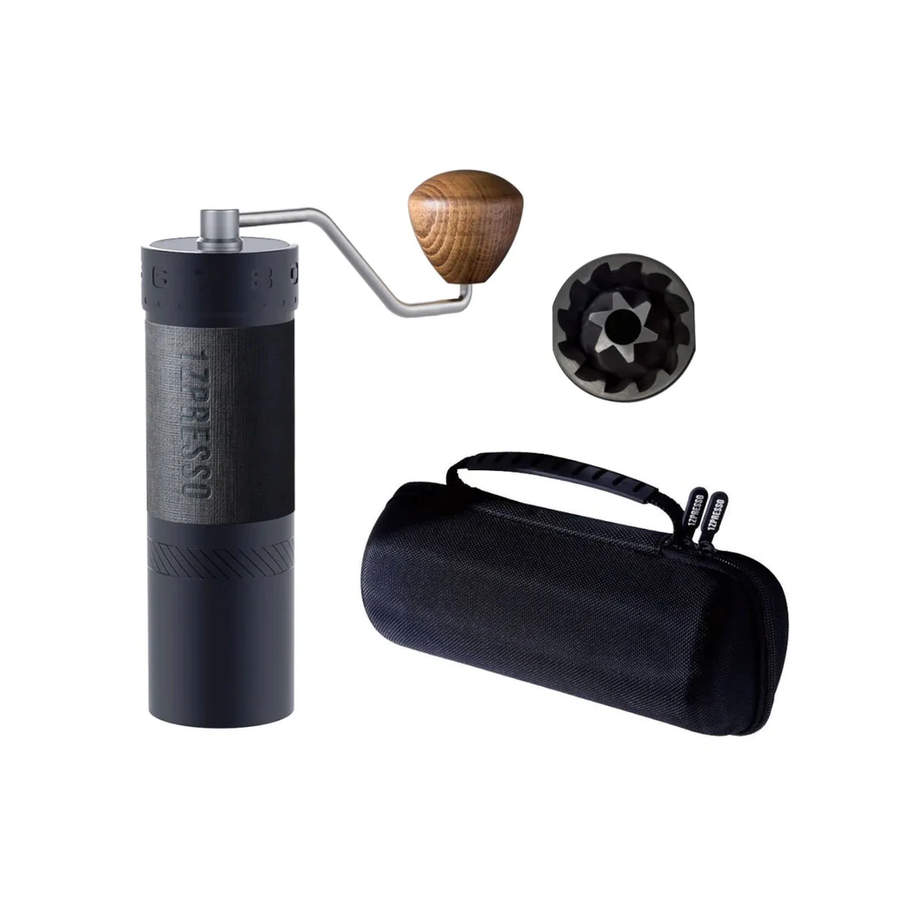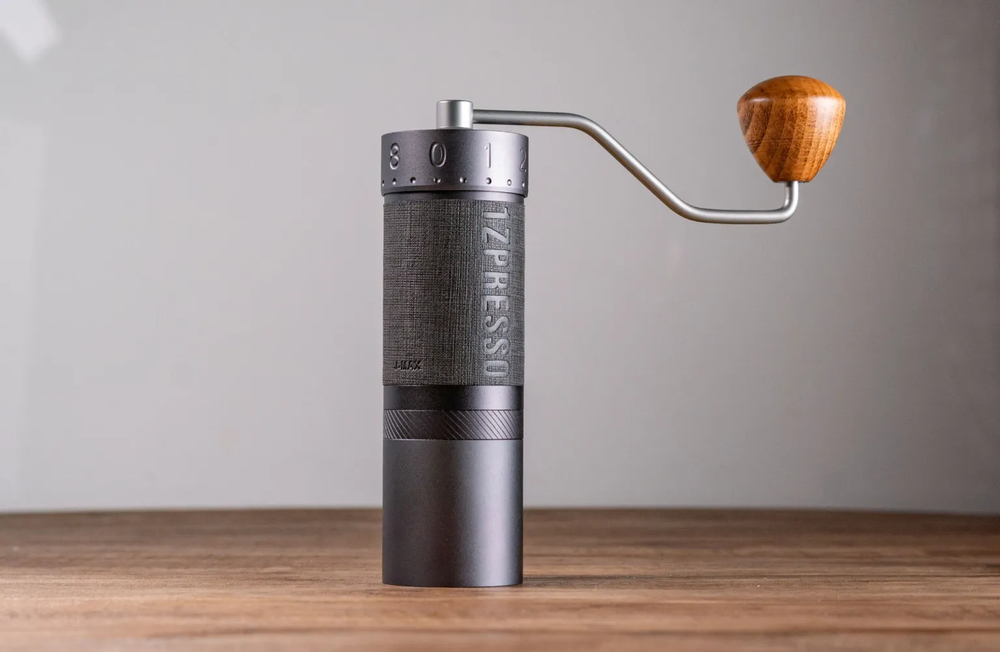The History of Gaggia Coffee Machines
Key Takeaways
-
Gaggia revolutionised espresso brewing by introducing pressurised water technology in 1938, which replaced steam and brought the iconic crema to espresso.
-
The company played a pivotal role in transitioning espresso culture from cafés to homes with innovative models like the Gaggia Gilda and Baby.
-
Significant advancements, such as semi-automatic systems in the 1960s and home-focused designs in the 1980s, solidified Gaggia's impact on coffee brewing.
-
Iconic models like the Gaggia Classic and Titanium combined traditional craftsmanship with user-friendly technologies, shaping the modern espresso experience.
-
Gaggia continues to merge heritage with innovation, offering high-performance, customisable machines that cater to both professionals and home baristas.
-
Its enduring legacy has positioned Gaggia as a global leader in espresso machine technology, influencing coffee culture worldwide.
When we think of espresso, the name Gaggia often comes to mind as a pioneer in coffee machine innovation. Known for revolutionising how we brew coffee, Gaggia introduced the world to the modern espresso machine, forever changing coffee culture. Its journey began in the 1930s, when a passion for creating the perfect espresso led to groundbreaking advancements.
Gaggia's machines didn’t just brew coffee; they symbolised a new era of craftsmanship and precision. From the invention of the first lever-operated machine to its role in popularising the iconic crema layer, Gaggia became synonymous with quality and tradition. These machines brought café-quality coffee into homes and reshaped how we enjoy our daily brew.
Exploring Gaggia's history is like tracing the evolution of espresso itself. It’s a story of innovation, dedication and a deep love for coffee that continues to inspire coffee enthusiasts around the world.
The Origins of Gaggia (1930s–1940s)

The history of Gaggia coffee machines began in Milan, Italy, during the late 1930s. In 1938, Giovanni Achille Gaggia filed a revolutionary patent (no. 365726) for a machine that used steam-free, pressurised water to brew espresso. This innovation was a significant departure from traditional steam-powered methods, which often caused burnt or bitter flavours. Gaggia's pressurised system not only enhanced extraction but also introduced the crema—a rich, golden foam on top of the espresso that became its defining feature.
By the 1940s, Achille Gaggia's innovation had laid the foundation for modern espresso technology. In 1948, he officially established Gaggia SpA in Milan. The company's early designs, like the lever-driven Gaggia machines, became groundbreaking for their precision and performance. These innovations marked the beginning of a transformation in coffee culture, shaping what we now recognise as the quintessential espresso experience.
The Rise of Gaggia in the 1950s–1970s

During the 1950s, Gaggia cemented its position as a leader in espresso innovation. The introduction of the AutonoMatic model modernised the coffee industry by replacing traditional lever machines with semi-automatic technology. This advancement allowed users to brew espresso with precision and consistency by pressing a button, eliminating the need for manual levers. The company’s ability to blend user-friendly designs with cutting-edge technology marked a turning point in the history of Gaggia coffee machines.
The 1960s witnessed further growth as Gaggia expanded its product offerings and market reach. The company introduced hydrothermal boiler control, a technical achievement that improved temperature regulation during the brewing process. This innovation enhanced both the quality of the espresso and the machine's reliability. Gaggia also collaborated with designers, beginning with architect Giuseppe De Gotzen, who conceptualised the aesthetic design for the Tel 70 model showcased at the 1968 Milan Fair. These developments not only elevated Gaggia’s reputation but also redefined the relationship between technology and style in espresso machines.
By the 1970s, Gaggia had established itself as a dominant force in the coffee machine sector, driven by a legacy of continuous innovation. Its Orione series, launched during this era, epitomised the company’s commitment to craftsmanship and functionality. This line reinforced Gaggia’s expertise in creating machines that catered to both commercial and domestic espresso enthusiasts. The company’s emphasis on technological excellence and design set a standard for espresso machines worldwide.
Innovation and Growth in the 1980s–2000s
During the 1980s, Gaggia expanded its influence by entering the home espresso machine market, marking a significant milestone in the history of Gaggia coffee machines. The company launched the Gaggia Baby range, pioneering compact designs for household use while retaining professional-grade performance. This model allowed coffee enthusiasts to enjoy barista-quality espresso at home, bridging the gap between commercial and domestic brewing.
In the 1990s, Gaggia further advanced its technologies with the inclusion of automatic and programmable features. Machines such as the Gaggia Titanium combined user-friendly interfaces with innovative brewing systems, enabling consistent results with minimal effort. These advancements contributed to making specialty coffee more accessible to a global audience, reinforcing Gaggia's reputation for excellence.
The turn of the millennium saw Gaggia adopt contemporary design aesthetics alongside technological progress. Models like the Gaggia Classic became iconic, celebrated for their robustness and semi-automatic features. These machines catered to both professionals and home users by blending tradition, reliability, and modern engineering. Gaggia’s presence in international markets flourished, with partners like BUNA Coffee showcasing Gaggia machines, further enhancing their accessibility.
Throughout these decades, Gaggia maintained its focus on blending tradition with innovation. From the inception of compact home-use designs to the integration of advanced brewing mechanisms, Gaggia’s commitment to quality shaped the modern espresso machine market, influencing how we experience coffee globally.
Gaggia in the Modern Era (2010s–Present)

In the 2010s, Gaggia focused on bridging tradition with cutting-edge innovation. The release of models like the Gaggia Classic Pro exemplified this approach. Designed for home baristas, the Classic Pro retained its traditional single-boiler, semi-automatic operation while benefiting from enhanced build quality, improved steam wands, and user-friendly controls. This machine became a favourite for those looking to replicate café-quality espresso at home without compromising on control or consistency.
During this period, Gaggia further refined its automatic espresso machines, incorporating precise features such as advanced temperature regulation and pre-infusion technology. These innovations were integrated into models like the Gaggia Anima series, enhancing extraction for balanced flavours with minimal user intervention. The marriage of mechanical precision and contemporary design reinforced Gaggia's reputation as a leader in espresso technology.
Gaggia also strengthened its product ecosystem with high-performance grinders like the Gaggia MDF. These grinders are designed to achieve precise grind sizes, optimising extraction and complementing the consistency of Gaggia machines. Such developments allowed users full control over the coffee-making process, meeting the expectations of professional and domestic espresso enthusiasts.
Presently, Gaggia continues to celebrate its heritage while embracing customisation and advanced technology. Machines with exposed saturated groups and personalised glass panels underscore the brand’s commitment to integrating aesthetic flexibility with outstanding functionality. Combining timeless craftsmanship with modern technology keeps Gaggia prominent in the evolving coffee culture.
Gaggia coffee machines have also become more accessible globally, serving as a testament to the brand's enduring legacy. Today, we can connect with Gaggia’s iconic machines, like those available at Buna Coffee, offering customisable, high-quality options for a perfect espresso experience tailored to individual needs.
Iconic Gaggia Coffee Machines
Gaggia coffee machines have shaped espresso history through innovation and timeless design, reimagining the way coffee enthusiasts brew and enjoy espresso. Among our favourites is the Gaggia Baby, introduced in the 1970s, which combined compact dimensions with professional-grade performance, making it a staple in households worldwide.
The 1980s brought the Gaggia Classic, an enduring symbol of robust design and semi-automatic functionality. This model became synonymous with reliability, offering home users the tools to craft café-quality espresso while preserving Gaggia's tradition of precision engineering.
During the 1990s, automatic models like the Gaggia Titanium elevated functionality with programmable features, making specialty coffee easily accessible. These innovations resonated in the modern era through contemporary models like the Gaggia Classic Pro, blending heritage craftsmanship with improvements in build quality and user control. Machines such as these affirm their ongoing role at the forefront of espresso culture, delivering unparalleled coffee experiences.
Exploration of these iconic machines highlights Gaggia's commitment to bridging tradition with evolving technology, reflecting the brand's significant influence on the history of espresso machines. Various Gaggia models remain integral to our collections and inspire coffee enthusiasts to elevate their brewing experiences.
The Legacy of Gaggia and Its Impact on Espresso Culture
Gaggia revolutionised how espresso is brewed, transforming coffee preparation and social culture globally. The introduction of pressurised water instead of steam by Giovanni Achille Gaggia in 1938 redefined espresso, creating a smoother, more balanced extraction. This process also introduced the rich crema, now a hallmark of well-made espresso, setting a new standard for coffee drinkers worldwide.
By the 1940s, Gaggia machines were redefining café experiences across Milan. The Gaggia Classica, released in the late 1940s, became a staple in Italian coffee shops, blending aesthetics with advanced mechanics. With its lever-driven system, the Classica delivered consistent results, influencing espresso traditions that endure today.
In the 1950s, Gaggia began offering home espresso machines, starting with the Gaggia Gilda. This innovation allowed coffee enthusiasts to enjoy café-quality coffee in their own kitchens. The Gilda integrated many key innovations from Gaggia's commercial models, including pressurised extraction, fostering a shift from café exclusivity to home-based espresso culture.
Further advancing espresso technology, Gaggia introduced semi-automatic systems during the 1960s, replacing manual levers with more user-friendly designs. These machines combined reliability with precision, creating opportunities for both skilled baristas and novice users to achieve professional results. Models like the Orione exemplified this balance of form and functionality.
The 1970s marked the debut of the Gaggia Baby, which made quality espresso accessible in compact, stylish designs. By bringing professional-grade performance to smaller spaces, Gaggia empowered an international audience of home users. This model played a vital role in expanding espresso culture beyond Europe to global markets.
In every decade, Gaggia has remained an industry leader, shaping both commercial and home espresso-making trends. Its ability to balance technological advancements with a deep respect for traditional espresso-making methods cements its lasting influence on the coffee world. For us, Gaggia represents not just innovation but an enduring passion for quality espresso.
Explore Gaggia machines at Buna Coffee's Gaggia collection, where the legacy of precision and craftsmanship continues to inspire coffee lovers.
Conclusion
Gaggia's journey through decades of innovation and craftsmanship has left an indelible mark on espresso culture. From revolutionising brewing techniques to blending tradition with modern technology, Gaggia has consistently set the standard for quality and performance.
As coffee enthusiasts, we continue to benefit from the brand's dedication to excellence. Whether it's a timeless classic or a cutting-edge model, Gaggia machines remain a symbol of passion and precision in the world of espresso.
Frequently Asked Questions
How did Gaggia revolutionise espresso brewing?
Gaggia revolutionised espresso brewing in 1938 by introducing a steam-free, pressurised water system. This innovation prevented burnt or bitter flavours and created the rich crema, a now iconic feature of espresso.
What is Gaggia's most iconic espresso machine?
The Gaggia Classic, introduced in the 1980s, is one of the brand's most iconic machines. Known for its robust design, semi-automatic functionality, and professional-grade performance, it remains popular amongst coffee enthusiasts.
When did Gaggia start making home espresso machines?
Gaggia started producing home espresso machines in the 1950s, beginning with the Gaggia Gilda. The trend was further popularised in the 1970s with the launch of the Gaggia Baby.
What makes Gaggia machines unique?
Gaggia machines blend tradition with innovation. They focus on exceptional espresso quality, offering features like pressurised brewing, pre-infusion technology, and advanced temperature control for a professional coffee experience.
Is Gaggia still a leading brand in espresso machines?
Yes, Gaggia remains a leading name in the coffee industry, balancing its traditional craftsmanship with modern innovations like the Gaggia Classic Pro and Gaggia Anima series.
What advancements set Gaggia apart in the 20th century?
Gaggia introduced significant advancements in the 20th century, including semi-automatic machines, hydrothermal boiler control, and collaborations with designers to enhance both functionality and aesthetics.
Why is the crema important in espresso?
The crema, a rich golden foam introduced by Gaggia machines, is an indicator of quality espresso. It enhances the flavour and creaminess, making it a signature feature of a well-extracted coffee.
Can Gaggia machines be used by home baristas?
Yes, Gaggia offers machines that cater to home baristas, such as the Gaggia Baby, Gaggia Classic, and Gaggia Classic Pro, which provide professional-level performance in a compact design.
What is the Gaggia Anima series?
The Gaggia Anima series is a range of automatic coffee machines that feature advanced technologies like pre-infusion and precise temperature control, designed for convenient, high-quality espresso brewing.
How has Gaggia influenced global coffee culture?
Gaggia transformed global coffee culture by redefining espresso-making techniques, introducing innovative machines, and making quality coffee accessible at home, setting the standard for modern espresso preparation.



